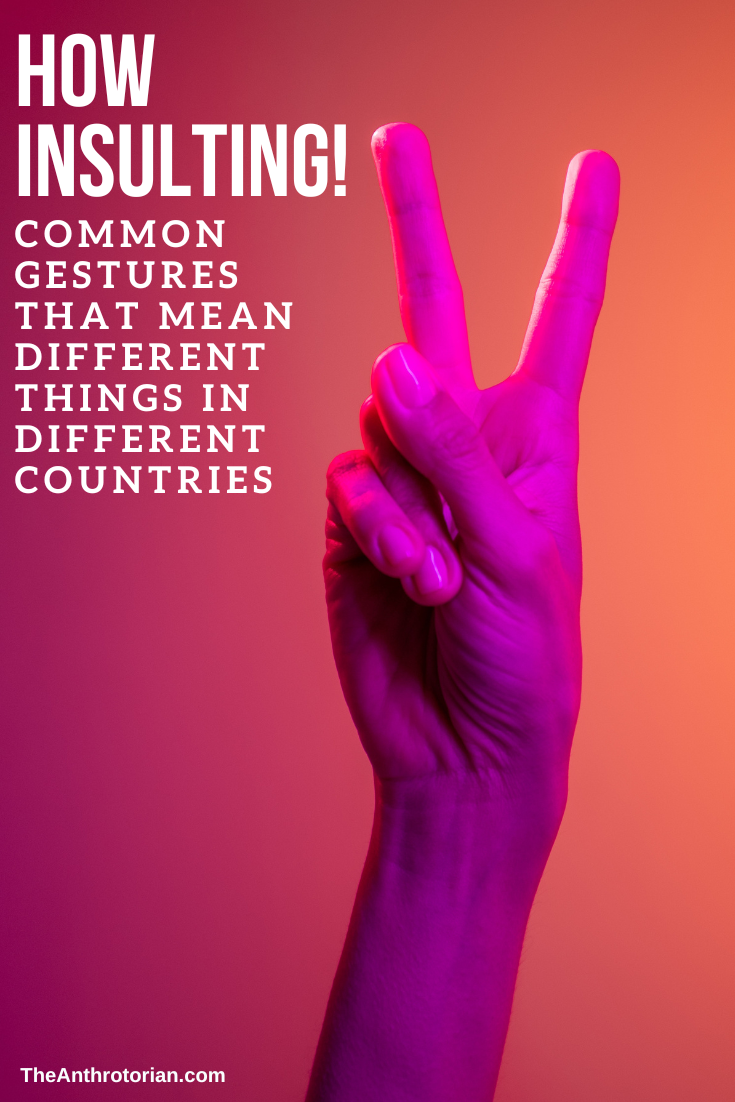You have mastered the basics of the spoken language, have appropriate clothing, and have the latest Lonely Planet tucked safely in your bag. You are ready for all that experiencing a new culture will bring — or are you…
Do you know that making a peace sign could start a brawl in a London pub or that putting your feet up after a long day of touring in Thailand could cause your waiter to spit in your soup?
Yup, all cultures are quirky, but understanding these quirks could make your adventure a whole lot less embarrassing.
5 meanings of common gestures
Beckoning to someone with your index finger
Though a simple way of saying “come here” in North America, this simple motion can be insulting or even obscene in other cultures.
In the Middle East, Spain, Latin America, Japan, Indonesia, Hong Kong, and Korea, beckoning with your finger is how you call domestic animals like cows or dogs, NOT humans.
To avoid a cultural mishap, turn your palm down and wave your fingers, or entire hand, towards your body.
Making a “V” sign with your fingers
For a lot of the world, this gesture means ‘peace’ or ‘victory’ and it is common to see people from Asian cultures, or American movie stars, photographed giving the sign.
If you make the “V” with your palm facing your body, however, you will be giving the people of the United Kingdom the equivalent of “the finger”.
Motioning with your feet
Do you ever put your feet up on a chair or kick a door closed?
Don’t do it in Thailand, India, Japan or parts of France unless you want to get a reputation for being rude. In these cultures, the foot is considered to be the lowest and dirtiest part of the body so unless you are getting a famous Thai foot rub, keep the soles of your feet firmly planted on the ground when out in public.
Touching someone on the head
Alternatively, the most sacred part of the body in most Buddhist cultures is the head (some believe it is the repository for the soul), so if you are in the habit of ruffling the hair of strangers, try and hold back in places like Thailand, India, Korea and other parts of Asia.
Taking something from someone with one hand
The first thing that I learned when I arrived in South Korea was that when giving or receiving items from another person you MUST use two hands, showing that you are giving your full dedication and respect to the transaction.
This also goes in Japan, Vietnam, and China. In India, it is ok to use one hand as long as it is not your left which is considered ‘dirty’.
Pin Me!
Related Posts
Meet The Author
Lindsay Shapka is an avid traveler and the creator of The Anthrotorian — a website dedicated to sharing travel tips, stories about adventures, culture quirks, artists you should know, fascinating bits of history, and more!
She is also an artist, marketing specialist, editor, and freelance writer who has work featured on websites, blogs, and in magazines like National Geographic Traveler.











If the last few years of travel has taught us anything, it is that airports are busier than ever, and both they, and the airlines, are struggling to keep up with the demand.
Throughout the recent summer and holiday seasons, we were bombarded with images and videos of stacks of lost luggage left in airports all over the world. If you are anything like me, it has made checking a bag seem like a risk that I am not willing to take — especially if I am going for a short trip and don’t want to be without my clothing, etc. for even a day.